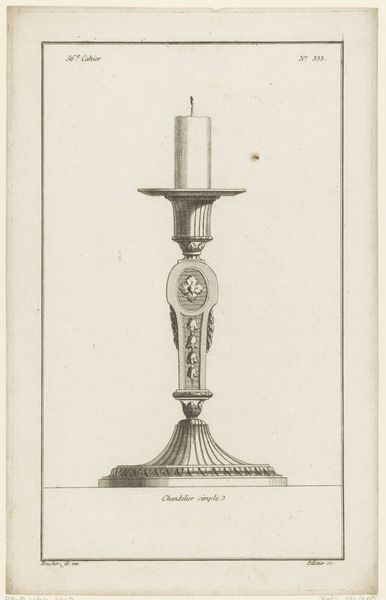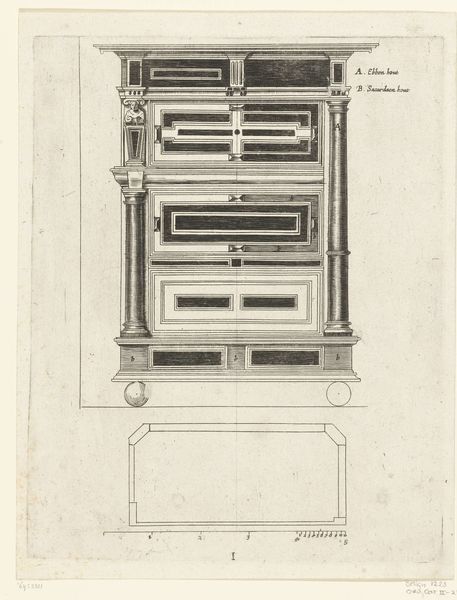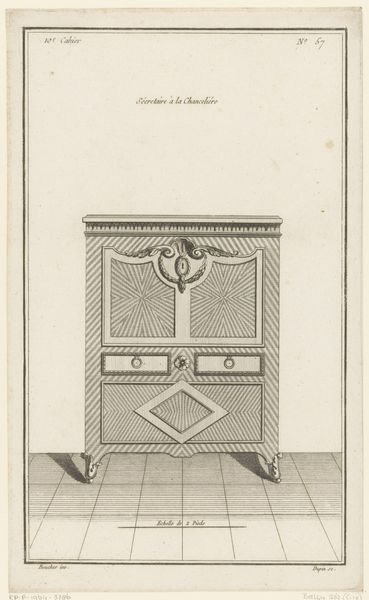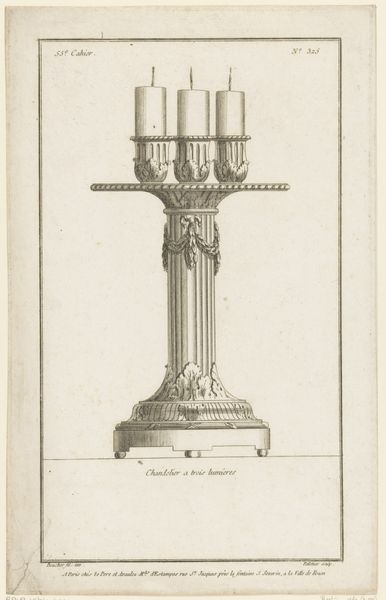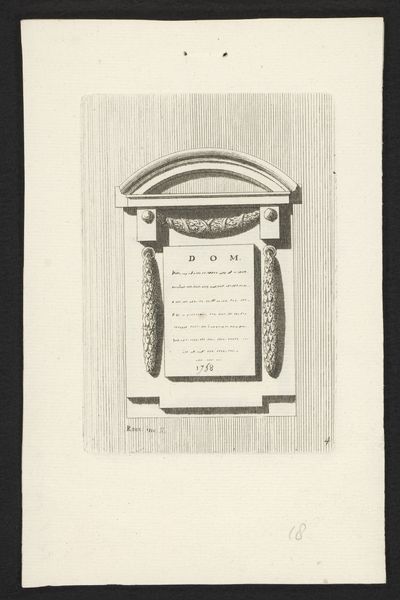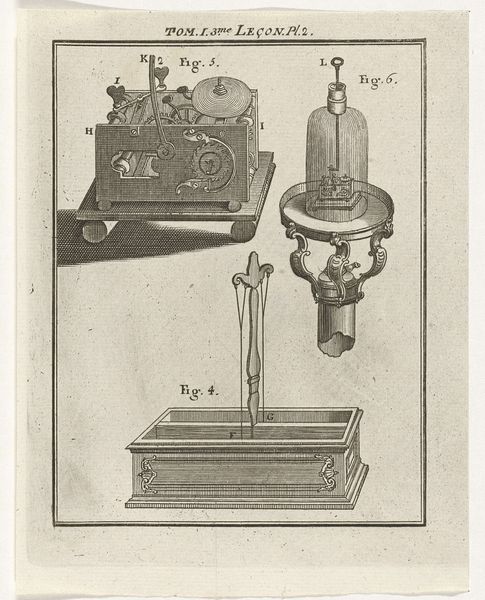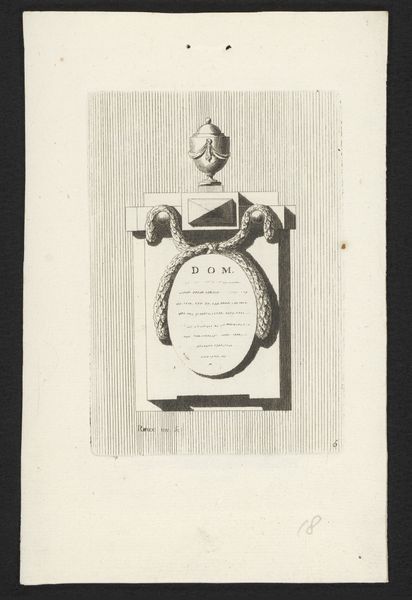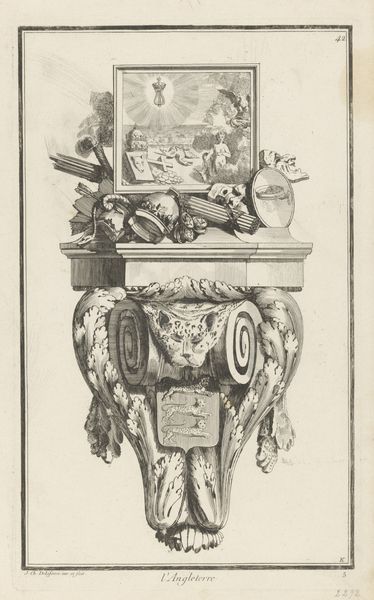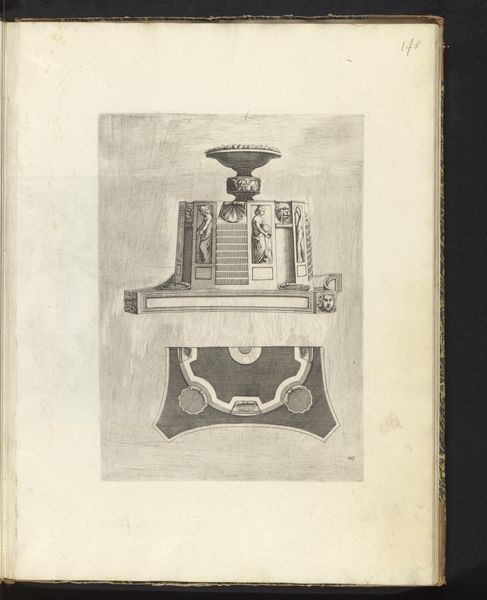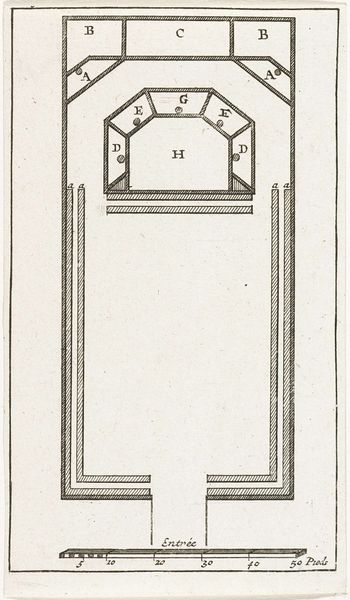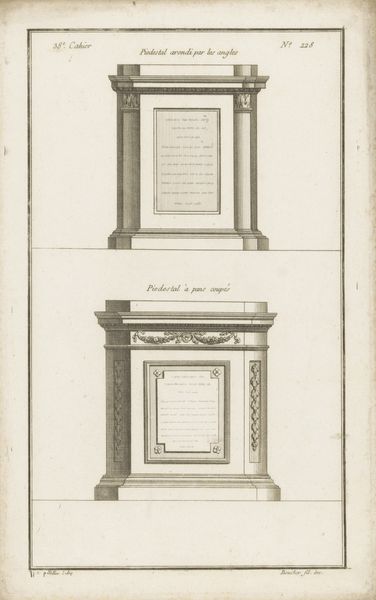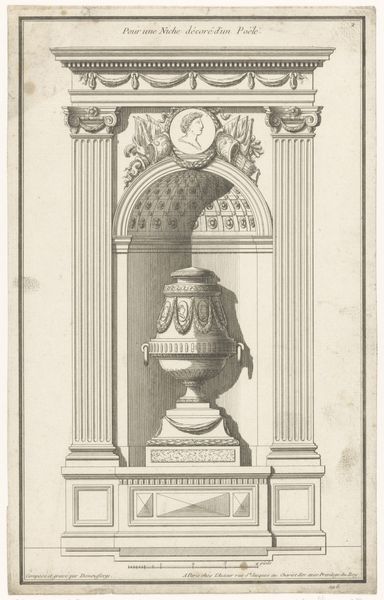
print, engraving
#
baroque
# print
#
form
#
geometric
#
line
#
history-painting
#
engraving
Dimensions: height 119 mm, width 91 mm
Copyright: Rijks Museum: Open Domain
This is an etching, an early form of printmaking, by an artist named Raux. The image shows an elaborate tomb, complete with a sarcophagus, memorial inscription, and classical architectural details. What's remarkable is the degree of control that the artist had over their materials. To create an etching, the artist would first coat a metal plate with a waxy, acid-resistant substance. Then, using a sharp needle, they would draw their design, exposing the metal underneath. The plate is then submerged in acid, which bites into the exposed lines, creating grooves. Finally, the plate is inked, and the surface wiped clean, leaving ink only in the etched lines. When paper is pressed against the plate, the image transfers. The labor-intensive process of etching allowed for the relatively easy reproduction of images, which aided in the dissemination of knowledge, and in this case, the memorialization of the deceased. The fine lines suggest a deep engagement with the craft of printmaking. The artist's hand is evident in every stroke, blurring the boundaries between art, craft, and industrial production.
Comments
No comments
Be the first to comment and join the conversation on the ultimate creative platform.
